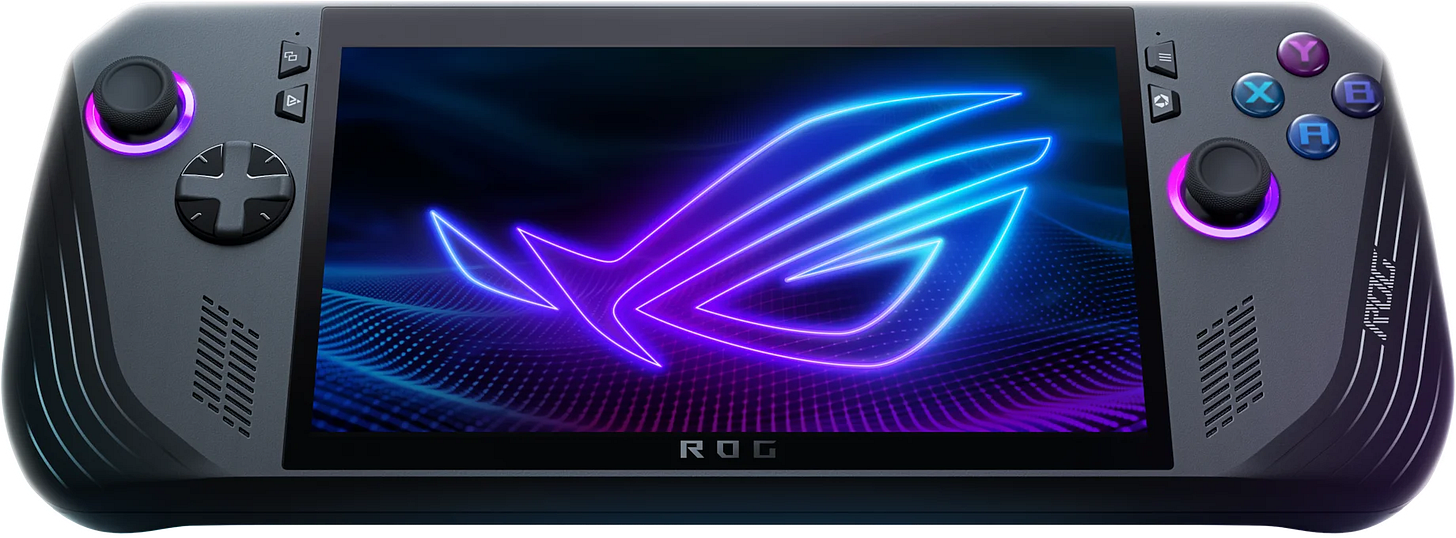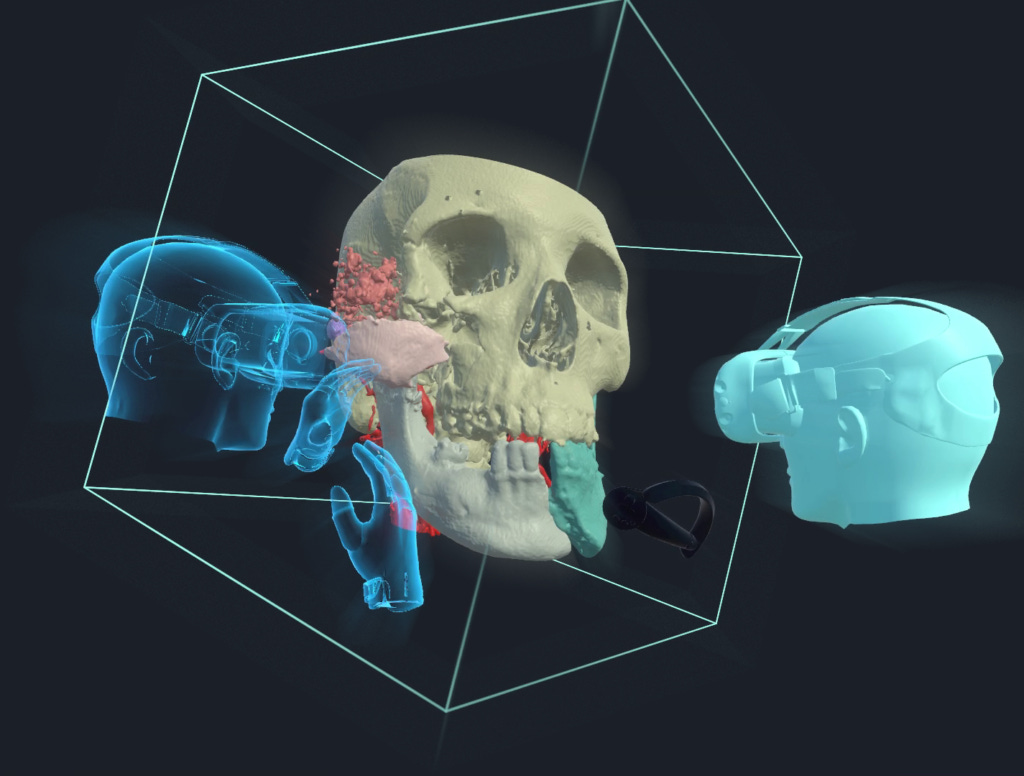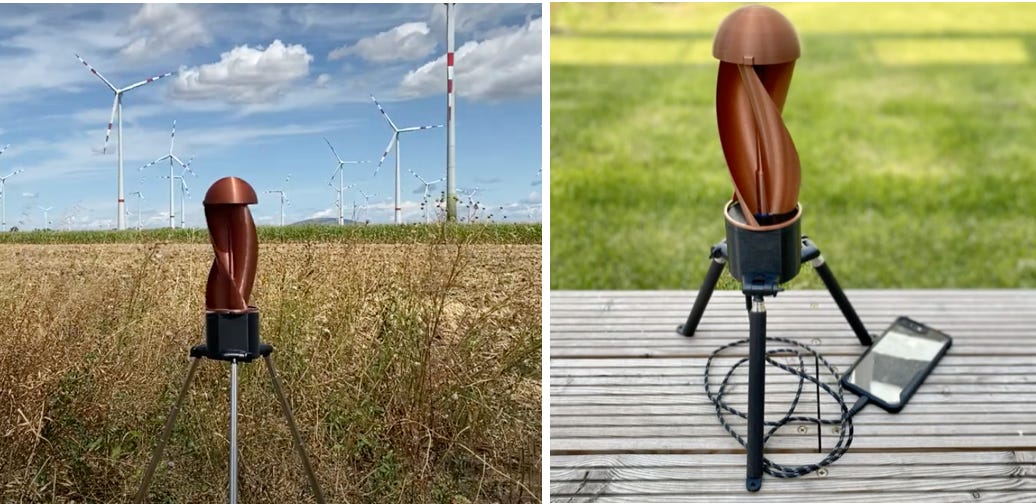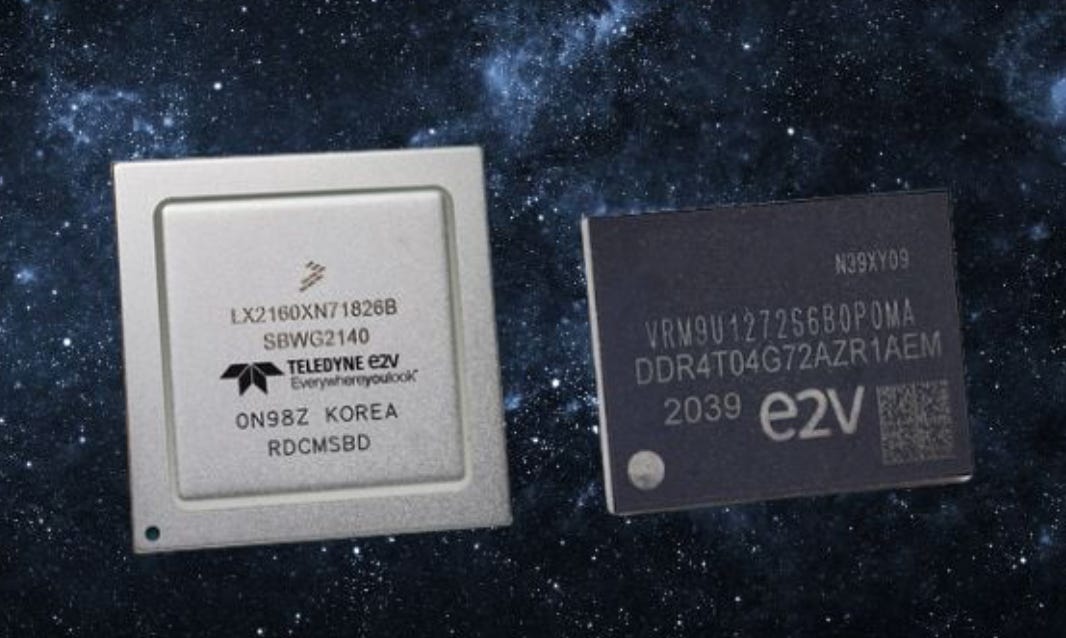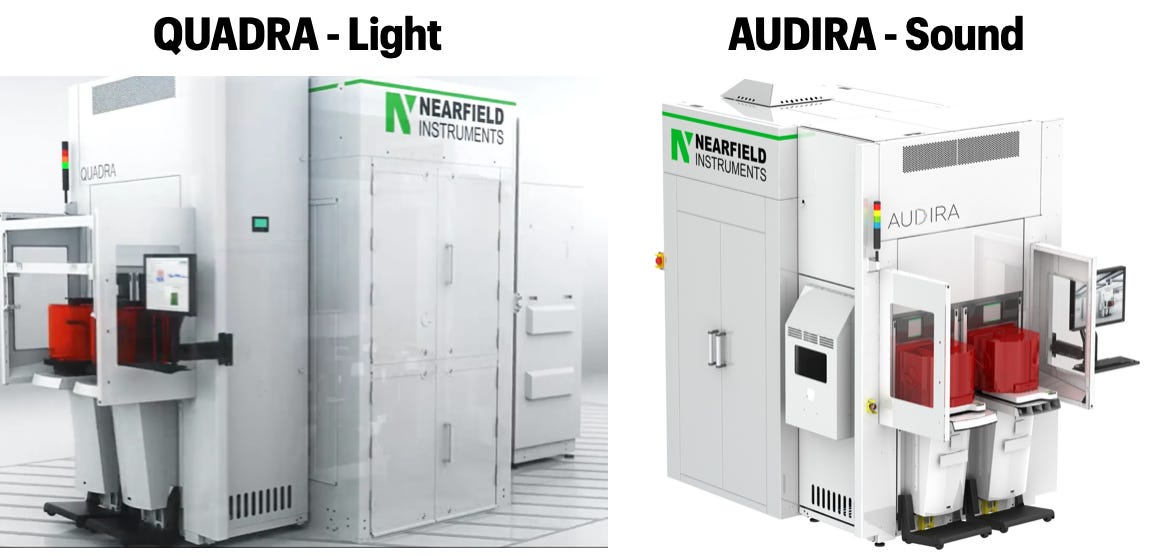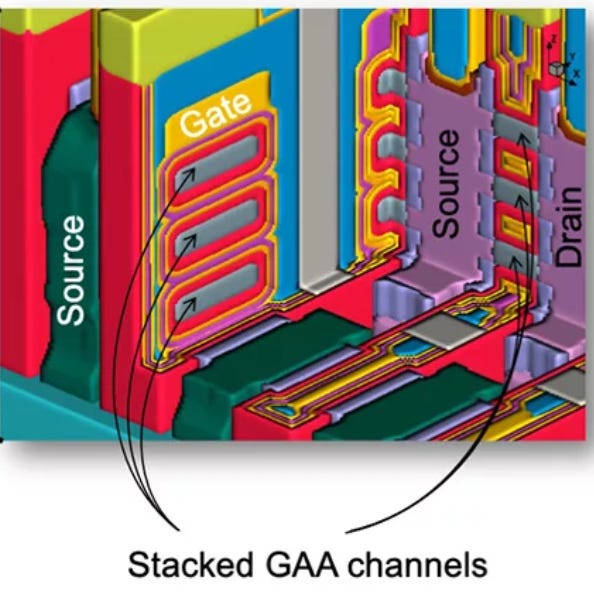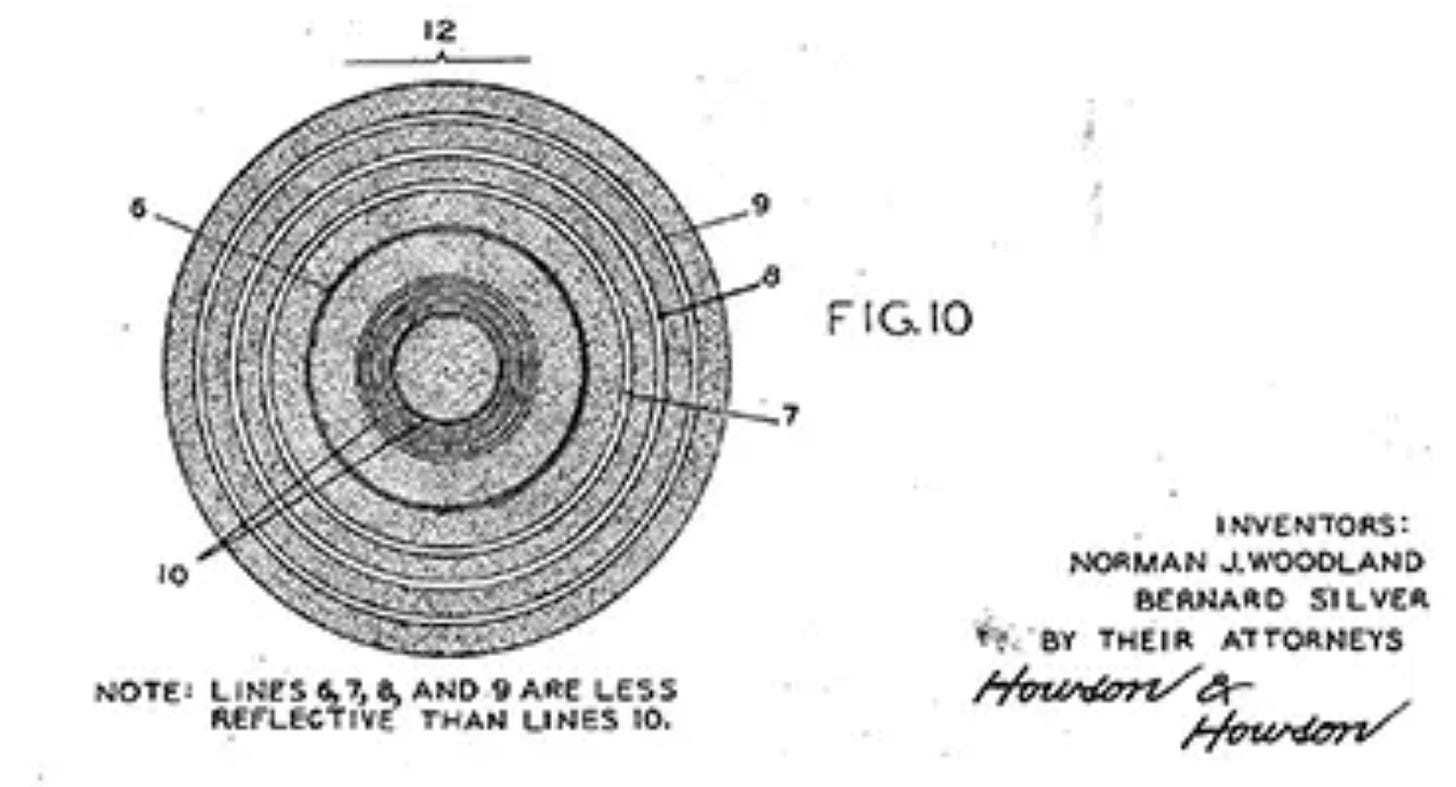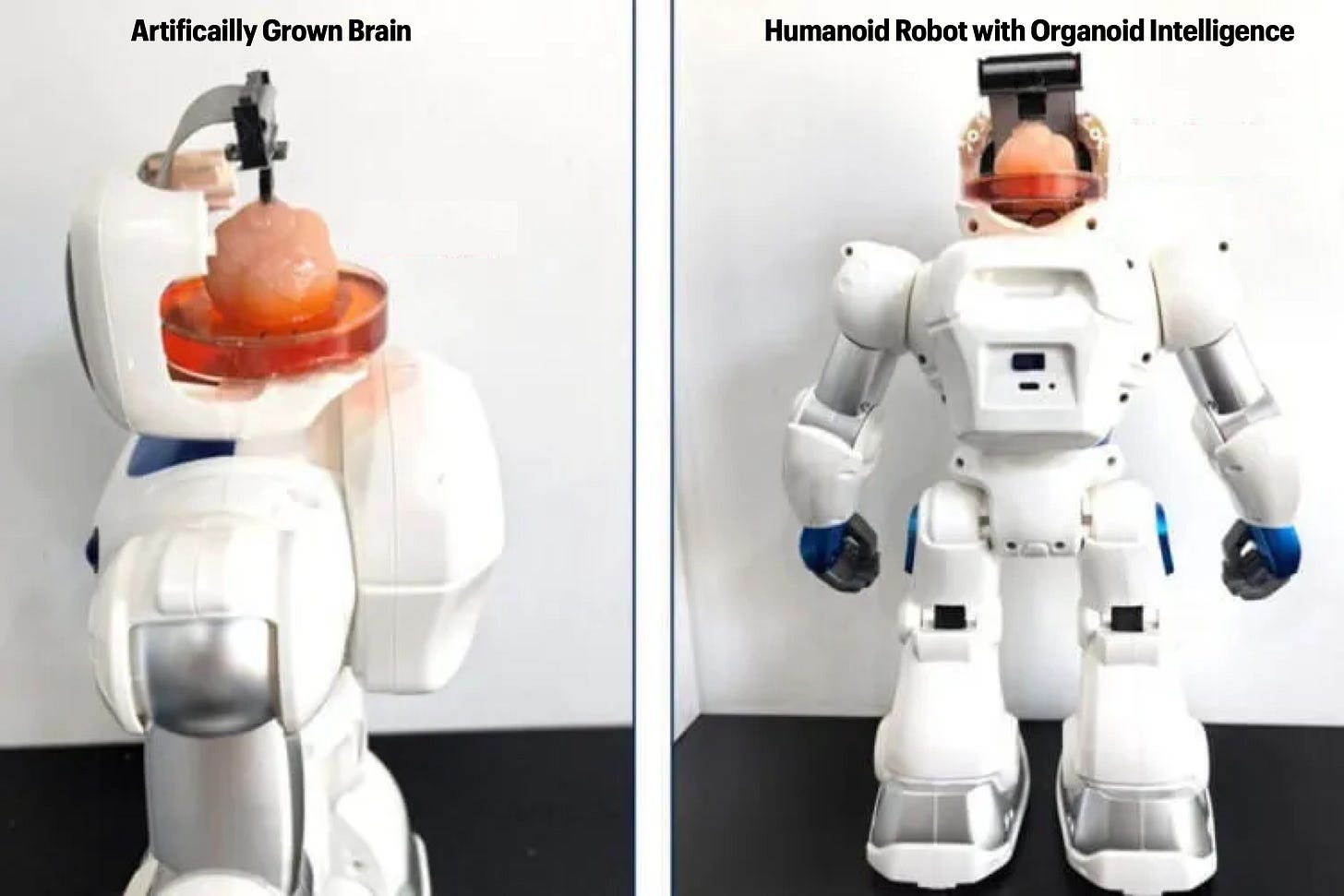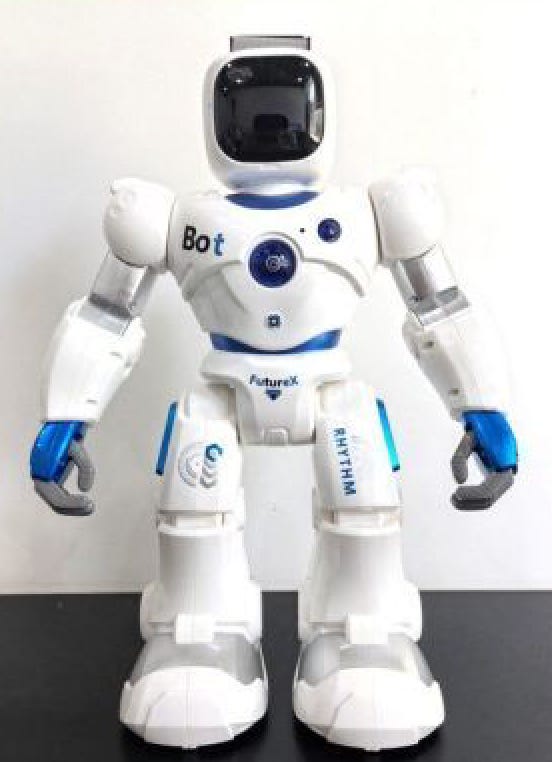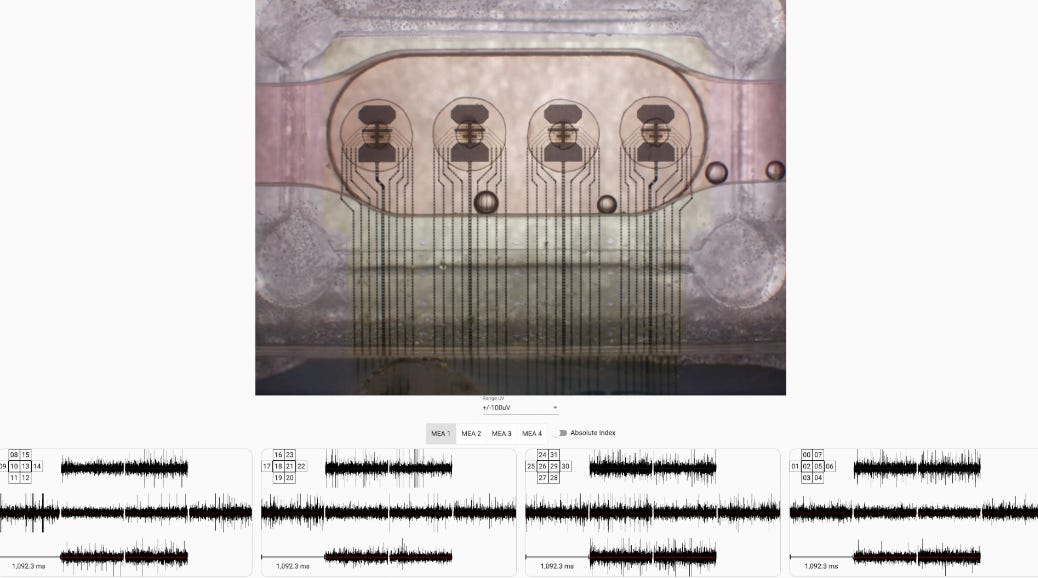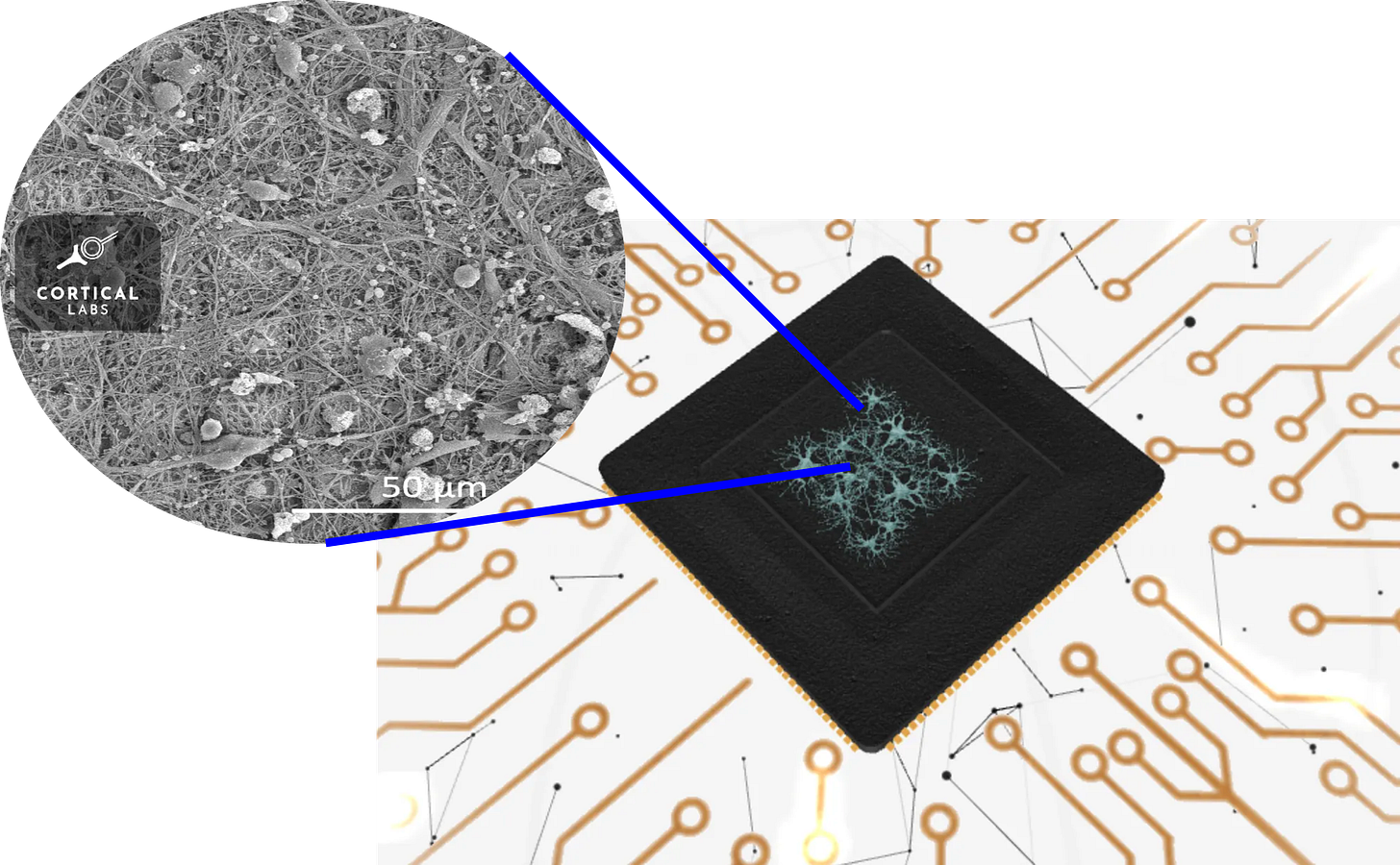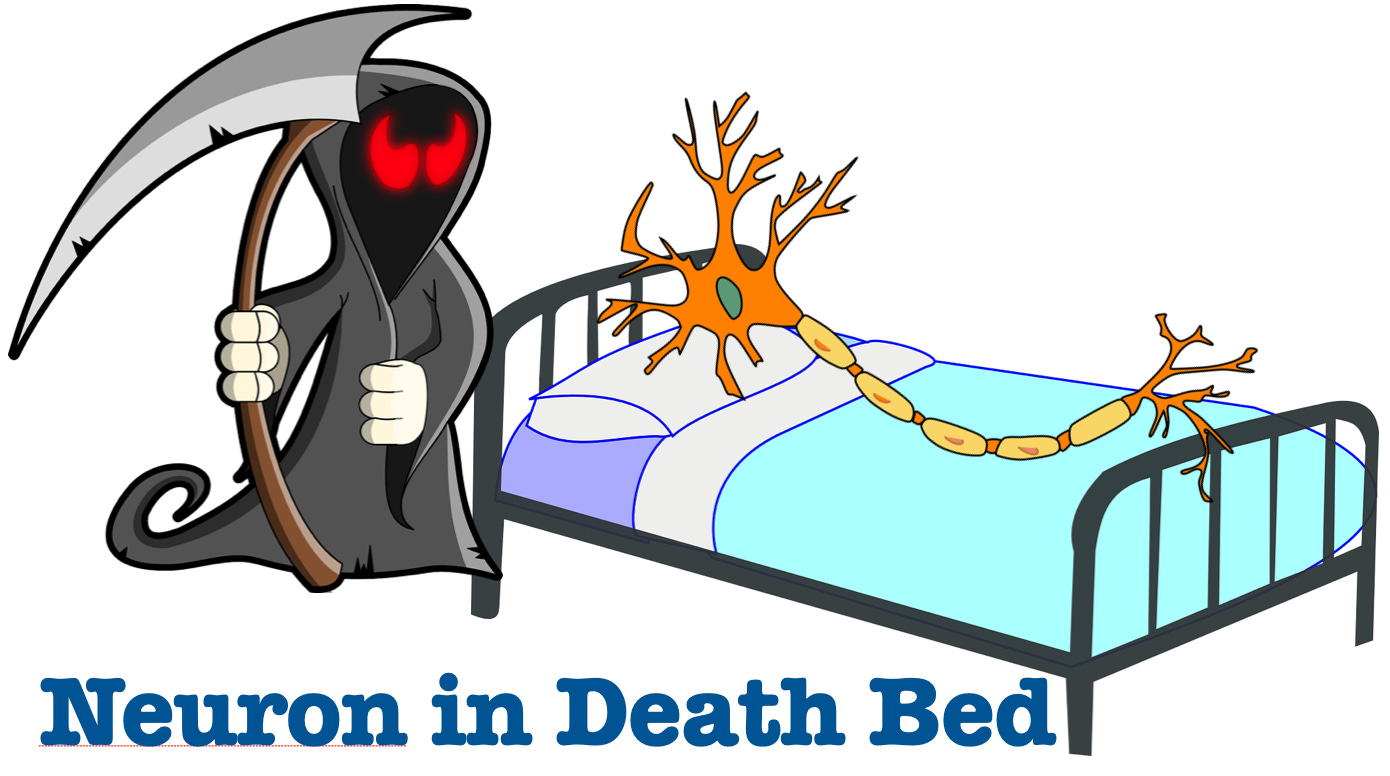Organoid Intelligence(OI) vs AI, Scalable AI Foundation Model for Robots, Sulphur in Mars, Medical VR, Space Processor, 3D Metrology for GAA transistors, New Products, Barcode History & more ...
Snaps to Inspire Innovation in You - 0010H
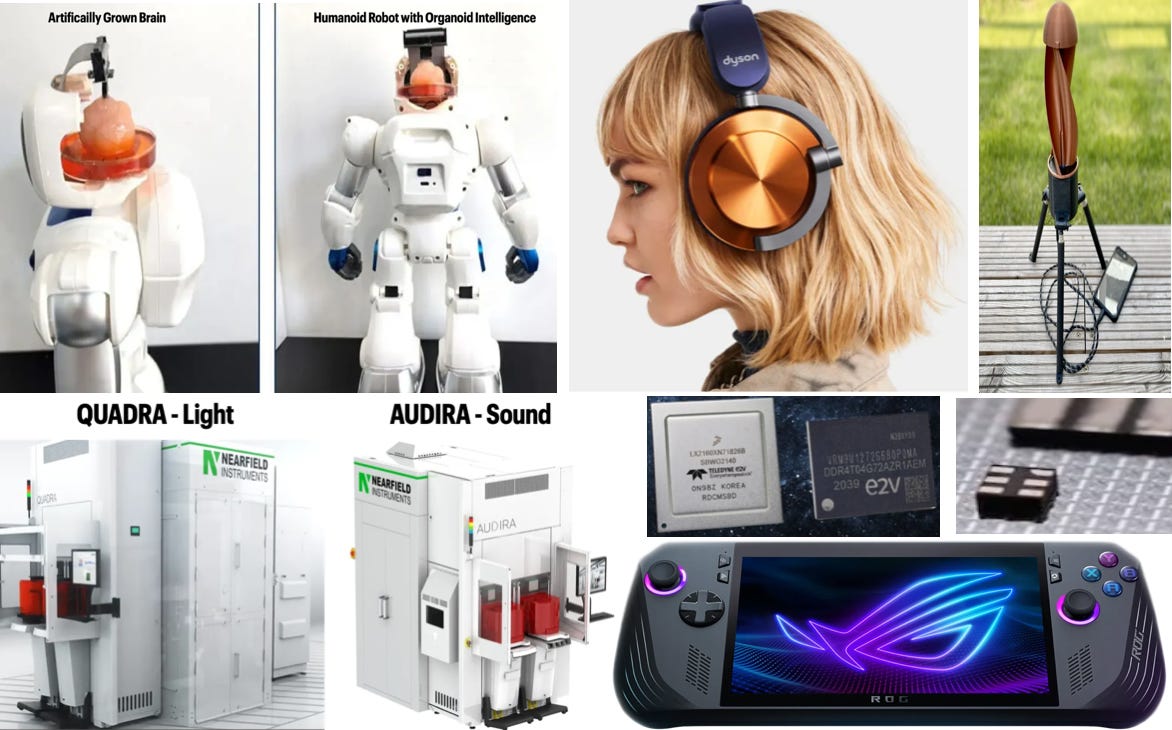
Innovative Product Snaps. . .
«Following, not necessarily new launches, intrigued me with their innovative features.»
Dyson OnTrac™ headphones launches with distinctive look & whooping 55hours of battery life. Initial reviews suggest the noise cancelling is great & the comfort is also well crafted with lots of customising options on cushions & caps. As any Dyson, its pricy. Also, am not sure about why some features are engineered like 6kHz-21kHz sound range. For most humans, many of this range becomes mute, when crossing adolescence. May be the target is more of teens ???
ASUS ROG Ally X, handheld gamer, launched with boosted memory & a doubling the battery capacity of its predecessor by taking it to 80Wh. It even had an upgraded cooling system. Biggest downside reported on multiple reviews is its display. There was also concerns shared about its input, ranging from unavailability of trigger stops, trackpad to unreachability of some keys for users with smaller hands. However, the biggest head turner is its $800 price tag.
Elucis - The FDA cleared Mixed Reality Software for surgical planning is developed by Realize Medical. When VR systems are being used for entertainment & office purpose, this Canadian company has took it to healthcare application. Th company says the Elucis represents the most advanced offering in the mixed reality space, & with powerful image processing, modeling, and collaboration tools, it’s also a comprehensive and complete platform for serving the full suite of growing 3D needs in medicine.
Tornado-Foldable Micro Wind Turbine with 15,000mAh capacity that can charge two devices at the same time with wind power. Whats more interesting is that it comes with hand crank for charging in “no wind” region & it even acts as power bank if you decide to charge it from your mains. Comes with accessories required to position it for maximum power generation. The best part I like is the specification of 10dB maximum noise. Its claimed as the quietest portable wind turbine which can work upto 70kph/43mph.
SiT1811 - The Smallest & Lowest Power 32kHz Oscillator, from SiTime. It is is 30% smaller than competing oscillators. Further, it breaks ground in power reduction with a 510 nA current draw (typically < 0.6 µW). With ±20 ppm frequency stability, it is well suited for small IoT edge devices.
Teledyne e2V launches processor & memory for space application. Considering the increased space activities taken up by public & private entities across the world, the demand for chips which will suit the space has “skyrocketed”. Teledyne e2V had launched rad-hard LX2160A, which is a 16 core ARM based processor. Also, it announced the 8 GB space DDR4 memory as part of its edge compute solutions for space.
Innovative Trend/News Snaps. . .
«Following announcements / news caught my attention.»
US Investing $1.6 Billion for next gen packaging research. Like how many of the gadgets end users aren’t aware of the semiconductors that is powering their experience, many semiconductor folks doesnt appreciate the role of packaging. It is impossible to meet the demands of our technology goals without focus on chip packaging. Surely, revolutionary outcome is going to come in the coming years.
Curiosity Rover finds pure sulphur in Mars. When it was going trekking the Gediz Vallis channel, it collected & crushed a rock later to find it was of pure sulphur. "It shouldn't be there, so now we have to explain it.” is the statement from Ashwin Vasavada of NASA's Jet Propulsion Laboratory.
Intel’s “Raptor Lake” seems to be caught in a muddy swamp. NVIDIA, put Intel’s back on the target on april, after letting all know that its Intel’s processor issue causing widespread gaming crashes reports from this February. However, this week two well known game publishers, Warframe & Alderon, came up with the data showing that Intel’s chip were behind their ~80-100% crash rate. Initial investigations point towards power management issue with chips doing over clocking. Hopefully, Intel will resolve it soon.
On the positive side, for Intel, its AI hardware & Software solution will power immersive and inclusive experiences at the upcoming 2024 Paris Olympics.
Eureka labs, a startup offering GenAI powered Undergraduate course gets launched. Founded by OpenAI co-founder and former Tesla AI director Andrej Karpathy. Eureka Lab's first product, LLM101n, is claimed to be designed for becoming world's best AI course at an undergraduate level. For starters, you can learn to build your own LLM like ChatGPT.
Skild AI Raises $300M for building a scalable AI Foundation Model For Robotics. Amazon’s Jeff Bezos & Softbank are among the key investors. The company is breaking the data barrier in robotics, training its model on at least 1,000X more data points than competing models. If this scalable AI foundation model becomes reality, then it will bring significant change to the world economics.
AMD makes bold claim for its datacenter silicon, Epyc Zen 4 cores. AMD states that, NVIDIA Grace CPU Superchip is no match for its upcoming core. The product combines a pair of CPU dies packing 72 Arm Neoverse V2 cores apiece, connects them with a 900GB/sec NVLink chip-to-chip interconnect, and backs that with up to 960GB of speedy LPDDR5x memory.
Innovative Company Snaps. . .
« A Company, which I found intriguing owing to their product/ market/other innovation »
NearField Instruments- Trying to break barriers in Semicon Equipment Space, with its 3D Metrology System
NearField Instruments, based in Rotterdam in Netherlands, was founded in 2016 to address the metrology gap that is existing in very advanced nodes like the GAA (Gate All Around) transistors.
Heavy investment, skilled people & technology required makes semiconductor equipment space a tough one to enter, for startups. Hence, its remarkable that NearField Instruments is challenging giants like ASML, Applied Materials & LAM Research to name a few.
Advanced process are now crucial for realising the chips, required for AI applications.
Gate-All-Around FETs involves lots of sub surface 3D features & deep pitches, as given in the below image. It is a genuinely complicated process & should never be shown to a electronics graduate starting to learn about transistors ;-)
Though GAA brings more benefit than its predecessor, FinFet, it also brings a big lots of challenges. One challenge, is discarding defective devices & at the same time, not throwing away “good” devices owing to measurement fault.
Nearfield Instruments’ newly developed Feedforward Trajectory Planner (FFTP) imaging mode enables on-device, non-destructive measurements to be used for in-line process monitoring of GAA FETs at 3nm and beyond.
The company claims that the conventional technologies have reached their limits and can no longer help in getting the required yield for high end process.
Further, as per Nearfield Instruments, with their revolutionary mechatronic concepts in the architecture of their QUADRA, they are able to achieve industry best precision, reproducibility, productivity along with the crucial “speed”. Basically QUADRA deals with “light” as its scanning & imaging.
They claim that their architecture allows parallel working possible, which helps to give 100 fold productivity increase compared to few traditional offerings.
Another offering of them is AUDIRA, which combines an acoustic microscopy technique with their own proprietary atomic force microscopy (AFM) technology. The AFM probe is used to ‘listen’ to the sound waves coming through the wafer layers. AUDIRA scans across the die, with each step as small as several tenths of a nanometer.
NearField Instruments, has Samsung as its customer and claims to be in talks with other chip manufacturers. Considering the advanced nodes, it must be Intel & TSMC.
Recently, NearField Instruments have raised $148 Million. Cofounder & CEO, Dr. Hamed Sadeghian plans to utilise the funding by ramp up production capacity, expanding product portfolio & Strengthening their position in the Semiconductor Equipment space.
As per the company, AUDIRA is available for ordering now & QUADRA with Lightning Mode will be available from August 2024.
Innovation Methodology Snaps. . .
«Methodologies, often from existing inventions, to develop innovation mindset»
BarCodes - an invention first written on Sand, is innovated to run the world now
Sometimes stories of inventions really blur the lines between reality & magic. One such is the barcode. Nowadays we take it for granted when we buy any product. But do you know the Barcodes was not appreciated at all, for multiple decades after its invention?
When the super market was gaining stronghold in late 1940’s, a super market executive understood the peril they will be facing, if they continue to allow humans to enter price details of each of the items. It’s not just inefficiency for the supermarket staff, as a consumer one has to wait hours on the checkout.
Soon he reached out to Drexel Dean & pleaded to build an engineering solution for this growing menace. But the Dean wasn’t interested. However, a postgrad Bob Silver overheard the conversation and discussed with Joseph Woodland. Both of them decided to work on the problem, as they realised its potential.
This is when Woodland drew the first inspiration of the bar code, using his boycott days memory of morse code. But how he drew that is what’s interesting.
Woodland said “I remember I was thinking about dots and dashes when I poked my four fingers into the sand and, for whatever reason—I didn’t know—I pulled my hand toward me and I had four lines. I said ‘Golly! Now I have four lines and they could be wide lines and narrow lines, instead of dots and dashes“
He has invented a new way to represent product code in thick & thin lines on the beach sand.
The key thing to note here is “I didn’t know” statement from Woodland. He was immersed in the problem. He had objective & also he had resource to guide towards the goal - boys scout morse code knowledge.
But even him nor anyone before him thought of representing the code this way, before he drew it on sand. - As said, it indeed blurs the lines between reality & magic
After that invention spark, he did lots of innovation & even built prototype to bring this idea into market. But when he tried to build this in 1951, we didn’t even have LASERs. However, his patent was awarded in 1952.
Technology to realize their patent was available only in 1970s. It must be noted that the initial barcode was in concentric circles, called Bulls Eye barcode as given below. Woodland foresaw how people in checkout, will NOT scan in a specific orientation & hence he proposed this bulls eye bar code. However, when IBM wanted to productive barcode, bullseye was dropped, as it was impossible to get these circles, printed without smears in high speed press.
In early 1970s, IBM’s developed scanner IBM 3660, with the barcode being vertical lines, which we use till now & Woodland drew it without “knowing” . . .
Fun Fact : Even if it is 1940’s, if you look at some of the items in the beach like chairs, balls as in my image, its obvious where Woodland’s would have caught his inspiration.
The One Topic I Pondered. . .
Can Organoid Intelligence (OI) Challenge Silicon Intelligence ?
A Brief look at the OI’s progress, including the Tianjin University’s robot with organic brain
Organoids are artificially grown mass of cells/tissue that resembles an organ like brain.
Organoids Intelligence, is a field focused on biological computing using those cultured brain cells & brain-machine interface technologies
Currently many companies use Organoid Intelligence with Wetware Computing, which consists of Bio-organisms on top of hardware & software, we normally use for computing.
“Wetware” denotes “wet software”, which refers to the “software” within the living beings, like the DNA having code for the color of your hair.
It is very different from what Neuralink, kind of companies trying to do. They want to aid your organic brain with electronics. Whereas the Organoid Intelligence companies want to aid the electronics with organic brain.
But Why Organoid Intelligence based Bio Processors ?
The sheer savings we get in terms of power & efficiency, for the delivered performance, makes one to understand why people are dedicated to this research.
If you ask, Why do we want Bioprocessors ? The answer is, Energy — The Achilles heel of the current AI Systems. Bioprocessors can learn & process information with a million times less power.
For example, our human brain takes 20W of power to perform the “intelligent” work.
Compare this with the current AI machines, taking 10 GWh (6,000 x the yearly consumption of a European citizen) to run GPT-3.
We clearly have a winner.
Architecture of Organoid Intelligence (OI) System for BioComputing
Ofcourse, OI needs a organoid brain, which is cultured from stem cells nowadays as its most ethical way of creating one.
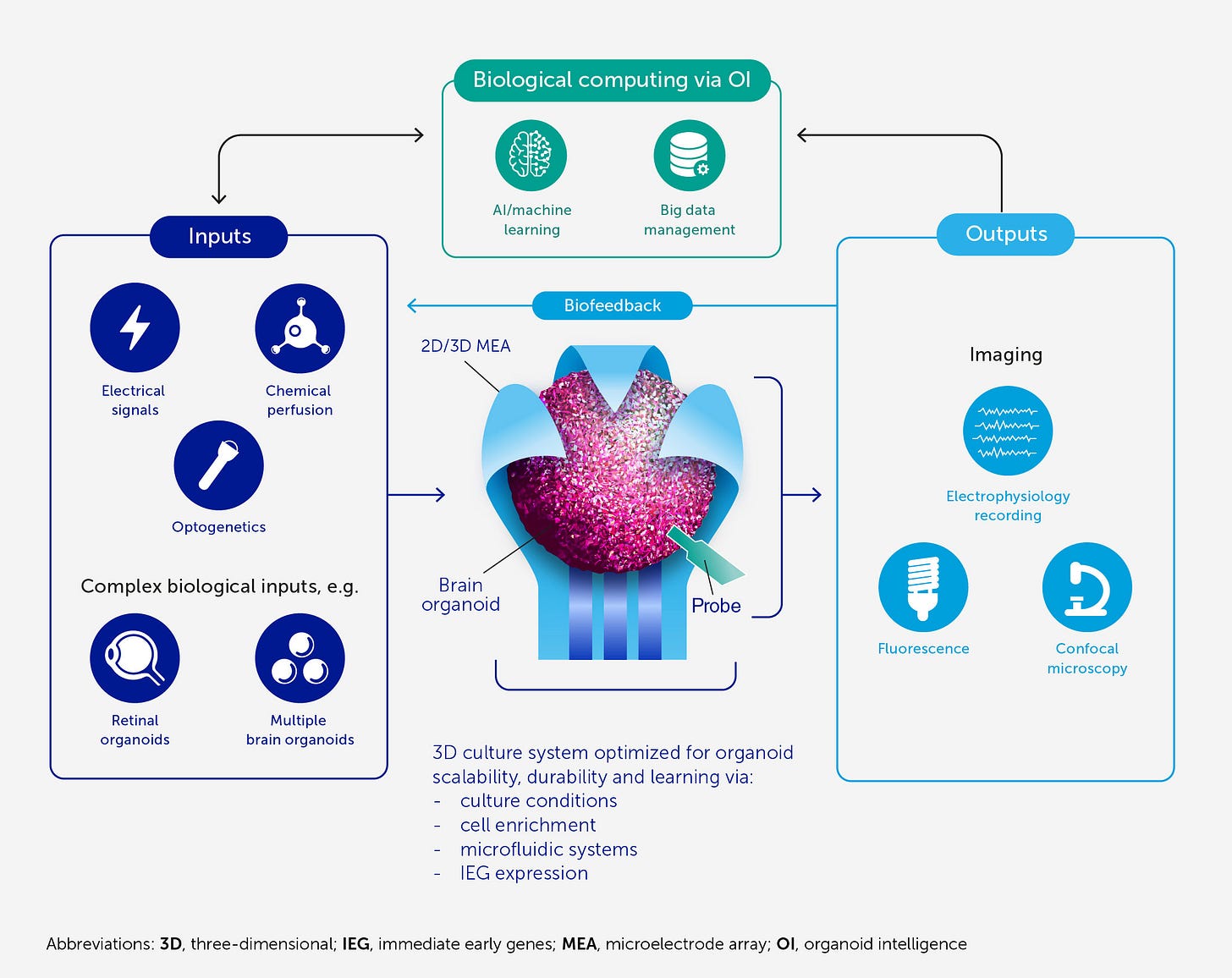
Once the Organoid Brain (CPU equivalent) is ready, then all we require is input & outputs to realize the system. One of the major difference here with traditional computer architecture is that OI brings memory & compute together in a parallel way. So all the discussion around bandwidth & capability of data transfer between processor & memory suddenly goes up in smoke,
The learning of Organoid is based on the neural connections it creates. And to be precise, at least I am not clear whether we have understood this clearly. Based on some publications, it actually looks like we are yet scratching the surface.
Like how AI powered by digital computers require electricity, the OI requires conditions & enrichments by cells & genes,
The scalability, viability, and durability of the organoid are supported by integrated microfluidic systems. Currently different research teams around the world are giving different inputs like electrical, chemical etc.
The inputs may be coming from machine sensor or from naturally captured signals from sensory organoids like Retinal Organoid-Eyes cells instead of Brain cells in Brain Organoid
Output is typically obtained with electrophysiological recordings or implantable probes. Outputs got like these are planned to be directly used for computation & also as biofeedback to promote organoid learning.
AI and machine learning are used throughout to encode and decode signals and to develop hybrid biocomputing solutions, in conjunction with a suitable big-data management system. - Ya its going like chicken & egg problem. . .
For more details, please check out the “Organoid intelligence (OI): the new frontier in biocomputing and intelligence-in-a-dish“ published in frontiersin.org.
Though this provides a great deal of information, I strongly believe many of the learnings will be revised once we go further up in the research.
Tianjin Universities Organoid Robot
As per AryNews, recently a Chinese media outlet reported about the humanoid robot from Tianjin University, which has a brain organoid along with a computer chip that interacts with the organoid brain’s nervous system.
Described as a ‘brain on a chip’, the brain organoid operates similar to a human brain using sensors and an AI-powered algorithm helping the robot to move, grab objects and avoid obstacles.
Researchers claimed, the organoid brain created from human stem cells, functioned like a human brain.
But, the researchers conceded that the technology in its early stage and faced challenges such as low developmental maturity and insufficient nutrient supply.
They even outlined a method (low-intensity ultrasound stimulation) as a strategy for treating neurodevelopmental disorders and repairing cortical damage. However, here also more work needs to be done to confirm the finding. But if this works, that method can be trandferred to help actual humans suffering from those brain ailments.
Hence, in a way, the work being done by Organoid Intelligence development helps us to learn more about our brain and devise methodologies to better it.
FinalSpark’s Living Processor that can be rented
FinalSpark, based in Swiss, aims to build world’s first living processors, through their research.
FinalSpark’s project is to bring evolutionary leap for AI and they want to bring it with Biocomputing. Their project involves growing 16 human brain organoids, to develop the so-called world’s first living processors, also termed as bioprocessors.
FinalSpark also unveiled the Neuroplatform, which is an remote online platform where you can run experiments on actual Biological Neurons by renting it.
Here also there are some limitations. The research group is not yet clear how to scale thisfor hundreds, if not thousand. The platform provides Programming API for Python along with data storage, backup, realtime neural stimulation, reading and 24/7 access to the brain organoid.
Cortical Labs - Video game playing, military funded, Dish Brain Intelligence
Australia based Cortical Labs, claims Generalised AI can only be achieved by OI path & silicon based AI can never reach there. Their CEO says billions of years of evolution has led Biology to deliver Generalised Intelligence.
What they mean is that, you dont have to see 100 tiger photos to know tiger is dangerous and run. Some say, that info is embedded in our DNA through thousands of years of “training”. Even if you take a recent phenomenon like electricity, it just takes couple of information to “train” a young kid, that electricity is bad, to never touch it.
Not more than 5 generation before, the dangers of electricity is known to us. And hopefully not many tried to touch electricity, after being said by elders that it’s dangerous.
Can the same be said to the current Silicon based AI? They require 1000’s of info about dangers of electricity, but may randomly get electrocuted, blaming hallucination
This sort of efficient, quick & low power intelligence only can power the dream of generalised AI is the claim of Cortical Labs.
Cortical Lab’s semi-biological computer chip, termed DishBrain, had some 800,000 human and mouse brain cells lab-grown into its electrodes. They demonstrated that within 5 minutes, this Bio-Chip learned to play Pong
And, playing videogame is just a start. According to their CEO, Weng Chong, “Ultimately, the goal for Cortical Labs is to be like Nvidia, which is to enable the creativity of other users to build on this technology”. Now you know where OI is aiming. . .
The DishBrain's advanced learning capabilities, in other words, could underpin a new generation of machine learning, particularly when embodied in autonomous vehicles, drones, and robots
Conclusion
I want to end this article with the Achilles heel of the Organoid Intelligence — Mortality
Yes, like us, it DIES. Organoids of Neuroplatform from FinalSpark, LIVES only 100 days. . .
Images from movies about getting answers from someone in death bed, comes to mind when thinking about getting results on the Neuroplatform on 99th day. . .
Yes all these tech are not commercial ready “now” and will take time. Data from Tianjin Universities Organoid Robot, FinalSparks & even Cortical Labs suggests the problem in similar lines.
However its a very promising tech if we succeed. As I always write, current digital computing architecture is NOT an answer for our growing compute need.
OI requires new models, algorithms, and interface technologies to communicate with brain organoids, understand how they learn and compute
But compared to other technological advances we make, like satellites or electronic instruments, outcomes from this Organoid research can directly benefit humans in understanding & addressing the needs of the organ which thrusted humans to the pinnacle of earthly species.
Finally, though a pioneering Brain Organoid publication happened in 2005, the revolutionary work in 2013, only ,further established the 3D cerebral organoids that contain different brain regions within single organoids.
This 10+ years Brain Organoid technology is just getting started. . .
Final Note. . .
Thanks a lot for reading Innovation Snaps.
Please share your comments & also this newsletter if you enjoyed it.



